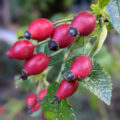by A J Selby.
Ask any group of people to name their favourite season and many will plump for spring or summer.
For some, however, the autumn holds a special place in their hearts – this season of mists and mellow fruitfulness. No other time of year demonstrates the irresistible urge in our DNA to see us through the winter to come. Blackberries and cobnuts, damsons and chestnuts, all picked to preserve and keep for the coming cold weather – in the garden produce is frozen or stored, in the kitchen jams and chutneys are bottled.
Our far distant ancestors dried the meat of wild animals and made warm clothing from their fur. Our more recent ones lived or died by the bounty of the harvest and how many fat cattle and sheep they had to survive the winter. As Shakespeare writes in The Tempest: “Earth’s increase, foison plenty, barns and garners never empty.” Foison means a rich harvest. We are lucky to have no such worries but the primeval urge is still ingrained in us to stock up and eat comfort food to ready our bodies for the winter and leaner times.
We can now enjoy autumn for the spectacular colours across our landscape and we are fortunate to have several places in the area to see this rich tapestry – Stourhead, Longleat, Duncliffe, to name but three. The colour formation in leaves is a complex process involving photosynthesis, the reduction of water in the leaves through a process whereby the leaf veins close off, and the pigmentation process of carotenoids – orange and yellows – and anthocyanins – reds and purples. In autumn the shortening days causes the slowing down of chlorophyll production. This fades the green colour while at the same time the yellow and orange carotenes that are masked by the green in summer become visible, and the sugars trapped in the leaves as they die back are converted to anthocyanins bringing out the red hues.
Most English woodlands are shaded yellow through orange to brown, with mostly the maples, viburnums and dogwoods offering reds. But what shades they are? The pattern of the different species, especially when viewed from afar, creates a stunning effect that only nature can offer us. On a clear and crisp morning as the mist rises from the valley and is burnt off by the rising sun, the vista of mature deciduous woodland is a thing of inherent beauty.
Venture into those woods and take in its calmness as the bird song, so intense in the spring, is muted to almost complete silence. As you feel the crunch of the leaves beneath your feet be careful not to tread on emerging fungi. After a warm summer, the autumn rains and the residual heat in the ground are a perfect combination for the fruiting spores of a myriad of different fungi, from tiny, nay almost invisible species, to the larger and more familiar ‘toadstools’. They will grow where there is any decaying matter, from leaf mould to rotting timber to open grassland.
Many of our popular mushrooms are both poisonous and wonderfully named. The red toadstool with white spots of Disney fame is the fly agaric – poisonous and enchanting. Then there is the panther cap – a beautiful brown cap dotted by numerous white-ridged spots, the funeral cap, Satan’s boletus and the destroying angel – was there ever a better named fungi? It is ghostly white and not that common. The best known and the biggest killer is the death cap. The medical summary for the symptoms, both for the death cap and the destroying angel is: effects will start several hours after eating. It begins with severe vomiting, diarrhoea and stomach pains. Then follows what appears to be a full recovery. A few days later you’ll die of kidney or liver failure! There is no known antidote and 90 per cent of people who ingest it will not survive. This mushroom has caused the most recorded fatalities in the UK. They have a pale olive-green cap, white gills and a bulbous base with a white collar. Be careful. Be very careful.
However, if you know what you are doing there are many delights to forage for. Giant puffballs are unmistakeable and are found in pasture, and can be sliced steak-sized, given a minute each side in a dry pan, then dipped in beaten egg and breadcrumbs and re-fried. The scarlet elf cups are found on decaying wood and are stemless and look just like the ears of an elf. Blewits grow in rings in pasture and are easily identified by their beautiful thick violet stems and are used in casseroles and stews. Big fat ceps are a culinary delight and sold in markets on the continent, as are golden chanterelles and parasol mushrooms.
My favourite is the shaggy ink cap – found in grassland, it is a small cone-shaped fungi that matures from the ends of the hood, turning ink-black and melting upwards until just the stem remains. And finally, the field mushroom – not as common now as in the past but a real bounty when it shows itself. Due to the poisonous nature of some fungi, always be sure of your identification before eating or ask an expert. There are some amazing flavours and textures to be enjoyed but, and I can’t emphasise this enough, safety first.








Leave a Reply